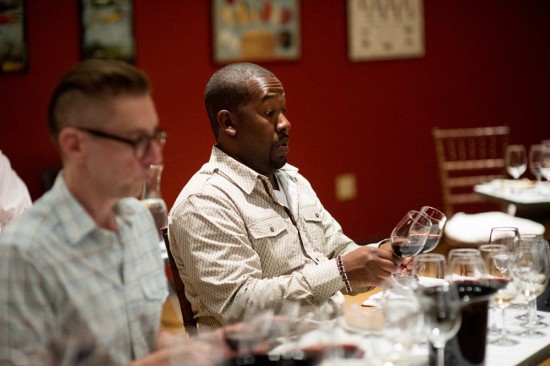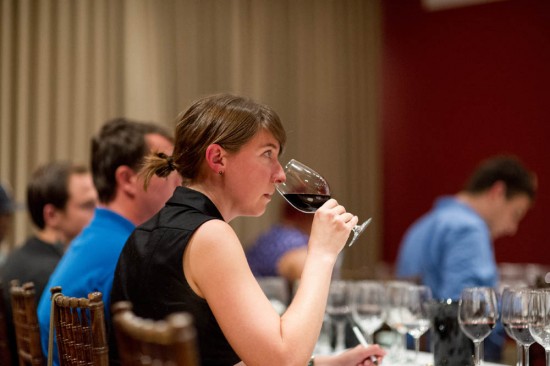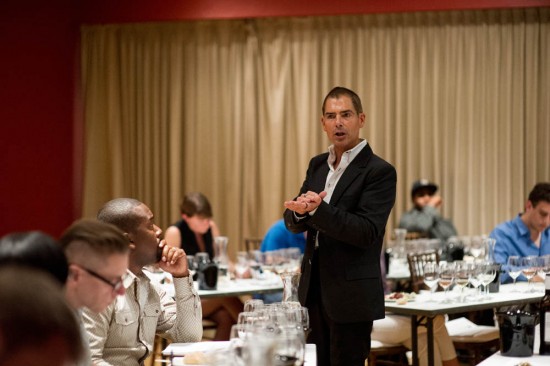Recently, in the first session of my Introduction to Wine class at ICE, a student posed the question that plagues many new wine drinkers: “What makes a wine good or great?” The question was more than fair, considering we had spent the evening tasting a variety of wines and noting the worthy qualities of their differing characteristics. Light, heavy, young, old, dry, sweet — could they all be good? Well, the short answer is yes.
Before delving into a more detailed look, first we have to recognize that one’s sense of taste is quite personal and subjective. Likewise, context — when, where and with whom we taste a wine — plays a critical role. From there, we also need to make a distinction between assessing a good wine vs. a great wine.
For now, let’s take a look at a few things to examine in determining if it’s a good wine. Does the wine look the way it should? Most wines are vinified to be clear, which can be an initial indication of their stability. Not that a cloudy or powdery wine is always bad, but you should ask: should this glass look this way? If it isn’t clear, it might be an intentionally unfiltered wine or come from a small, rustic producer.
Additionally, wines should generally look their age. Young wines usually have a brighter, lively color, where older vintages, wood-aged varieties or wines made from riper, raisin-like grapes will have deeper, mellowed hues Does the wine smell the way it should? Are there any off-odors on the first smell? Did you get a whiff of mold or rotten egg? Again, young wines should predominantly showcase fresher, vibrant smells, while older and wood-aged wines may offer some earthier notes suggesting time and decomposition. We also want to look for correct grape varietal characteristics — for example, apple or pear notes in Chardonnay and dark berries in Cabernet Sauvignon.
Does the wine taste the way it should? Taking into account the grape variety, point of origin and age, how does it feel and taste in the mouth? Most young whites should have a bright or assertive acidity. Young reds, on the other hand, may feature assertive tannins. Older wines typically offer a softer, rounder, smoother mouth feel. These are all widely ranging sensations, but all can be correct and good. Finally, pull some air over the wine in your mouth — how do the flavor and finish continue and expand the experience? Does the wine fit in the context of the current situation? A good wine should be appropriate to the moment. Is it right for the time of day, occasion, food and company? Are you at a casual summer lunch or an elaborate holiday feast? Will the wine serve as a quiet accompaniment or a central point of conversation to wine-savvy friends?
We all have our favorite wines, but a good wine choice for a particular moment may not be your go-to favorite. Even the most ardent drinker of robust reds has to reconsider wine choice when eating fresh clams on a hot day! Does the wine represent a good value? This is yet another subjective question, but it’s an issue that influences the equation significantly. First, one person’s view of an inexpensive bottle may be another person’s definition of luxury. Then, we also have to be realistic as to what represents a value from a particular region or producer. A wine that may be considered high priced from one area or winery might represent a bargain price point from another!
Limiting how much we spend, however, doesn’t mean that we have to skimp on "good." For example, if the occasion calls for a sparkling wine — or you just feel like having something bubbly — you don't need no need to buy French champagne. Many other regions make great sparklers, so why not try a North Fork Long Island brut?
So, returning to my intro class, all the wines we tasted that evening were good examples of what those wines should have been — and, therefore, great teaching wines as well. In the end, most of us are just looking for a little enjoyment from our wine, and enjoyment can be hindered by over-thinking the bad vs. good vs. great question. In the end, the only real way to develop your sense of what makes wine good or great is, quite simply, to drink more of it.
Ready to put your palette to the test? Click here to learn about wine studies at ICE.






